On Monday we had to be at the wood to meet a customer, who was collecting chestnut poles or making garden furniture. We went up a bit early and Tracy tidied and sorted some of the poles while I split the birch we'd sawn on Saturday, stacking it in the drying shelter: I've worked out that once the second part of the shelter is full, we'll have almost 2 cubic meters of firewood in there!
I've worked out that once the second part of the shelter is full, we'll have almost 2 cubic meters of firewood in there!
After our customer had visited, I took a few pictures of the things that are growing. We're certainly going to have no problem with regeneration in the wood. Here's a birch, of which there are hundreds around. Many will be eaten though, so not all will grow up into trees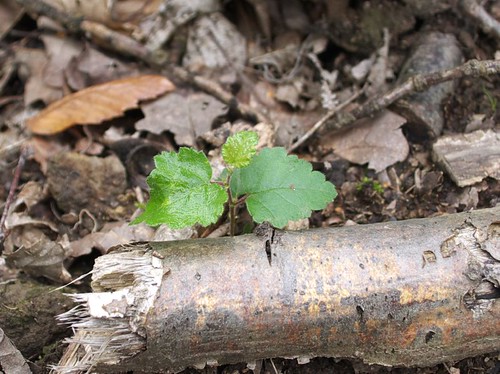 Here's a chestnut. There aren't as many of these self-seeded, but they don't seem to get eaten as much, so I think more will grow up to full size trees.
Here's a chestnut. There aren't as many of these self-seeded, but they don't seem to get eaten as much, so I think more will grow up to full size trees. Here's an oak. These are the ones we're trying to watch, as they seem to struggle when they're small, getting eaten and shaded out. We tried small plastic tree shelters, but they didn't seem to work so well, so we're looking for another approach...
Here's an oak. These are the ones we're trying to watch, as they seem to struggle when they're small, getting eaten and shaded out. We tried small plastic tree shelters, but they didn't seem to work so well, so we're looking for another approach...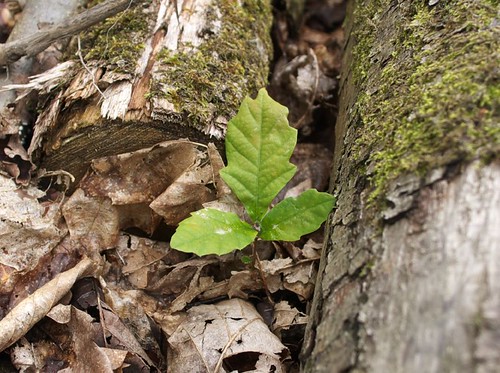 While we're on the subject of oak, we've found a number of acorns on the ground that have had gall wasp eggs laid in them. This one's a Knopper Gall. Apparently the insect requires both Pendunculate and Turkey oaks to complete its lifecycle.
While we're on the subject of oak, we've found a number of acorns on the ground that have had gall wasp eggs laid in them. This one's a Knopper Gall. Apparently the insect requires both Pendunculate and Turkey oaks to complete its lifecycle.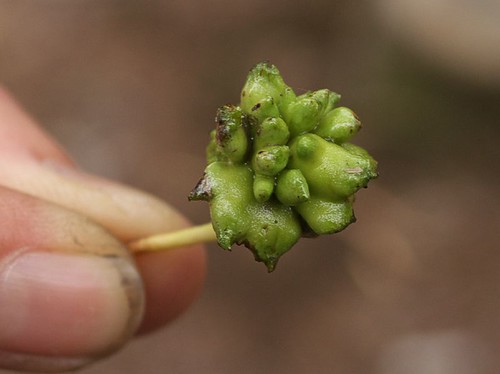
 There's also lots of new wild flowers coming up in the cant we cut last winter. These were not in evidence last year, so seem to be a direct effect of the work we did. We're not great on flower ID, but we think this is a Black Nightshade (which is poisonous):
There's also lots of new wild flowers coming up in the cant we cut last winter. These were not in evidence last year, so seem to be a direct effect of the work we did. We're not great on flower ID, but we think this is a Black Nightshade (which is poisonous):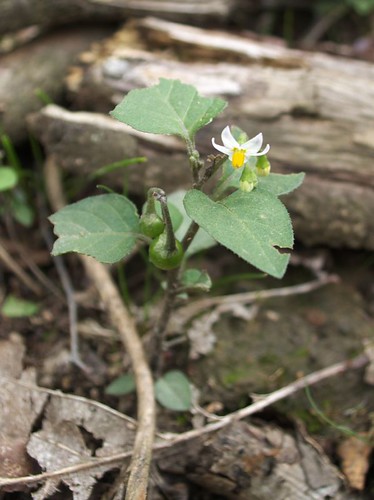 and we think this is a Common Calamint. UPDATE - it's not, it's a Lesser Skullcap, which is somewhat rare.
and we think this is a Common Calamint. UPDATE - it's not, it's a Lesser Skullcap, which is somewhat rare.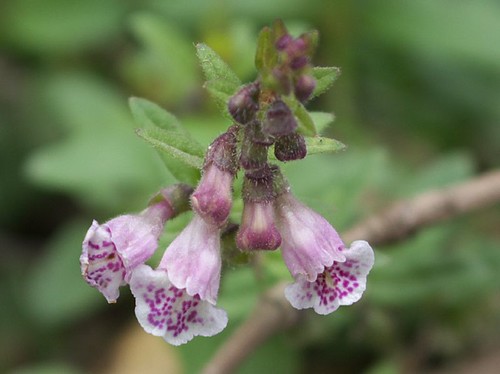
 There's also a lot of this, but we have no idea what it is. Hopefully it will flower and then we'll have a chance to ID it.
There's also a lot of this, but we have no idea what it is. Hopefully it will flower and then we'll have a chance to ID it.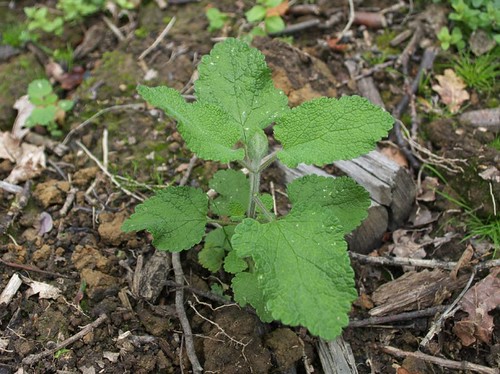 Mike
Mike
Tuesday, 26 August 2008
Bank holiday weekend - Monday
Subscribe to:
Post Comments (Atom)

2 comments:
Tip. Don't cover the birch completely. Only The top. It will dry far better if exposed to the wind. Rain wont bother it if it is stacked up. Once it is air dry, then cover it. That is unless I have got it all wrong and your trying to encourage mushroom spores? It's all about keeping air moving over it. We can air dry alder and birch in our yard in six weeks if it is split through. It is so quick to dry.
That's a good point. I'll need to re-design the shelter a bit - at the moment it's easy to take the cover off to do the stacking, but that's because it's just weighted down at the sides. The ends are open at least, getting some air through.
Mike
Post a Comment